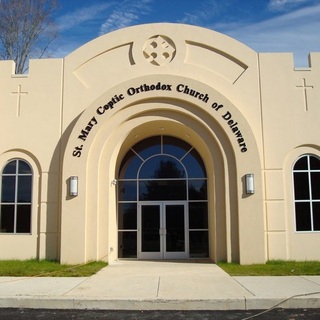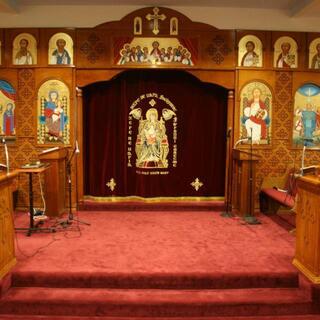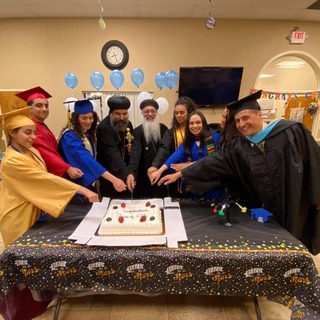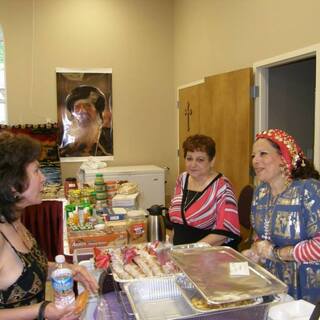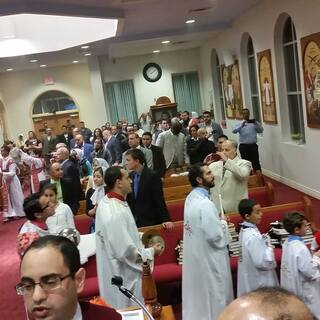We found 4 more Orthodox churches near Newark
Who we are
St. Mary Coptic Orthodox Church Of Delaware was incorporated by 7 immigrant families in the State of Delaware on January 18th, 1979, in a small room they rented from a Lutheran Church in Wilmington. Now they have their own building and a large congregation that gathers for worship, education, and fellowship.
In 1989, the late Pope Shenouda III, visited and blessed the original building of the church in prayer after appointing the first bishops for the North American dioceses, which now contain over two hundred parishes (214 in the United States, 38 in Canada and one in Mexico), up from four in 1971.
In 2011, a new building had completed its construction in Newark, DE for liturgical services. A certificate of Occupancy was received on April 15th, 2011. Therefore, the first liturgy in the new church building was prayed on Palm Sunday on April 17th, 2011.
In 1989, the late Pope Shenouda III, visited and blessed the original building of the church in prayer after appointing the first bishops for the North American dioceses, which now contain over two hundred parishes (214 in the United States, 38 in Canada and one in Mexico), up from four in 1971.
In 2011, a new building had completed its construction in Newark, DE for liturgical services. A certificate of Occupancy was received on April 15th, 2011. Therefore, the first liturgy in the new church building was prayed on Palm Sunday on April 17th, 2011.
Church Address

1644 Otts Chapel Road
Newark,
DE
19702
United States
Phone: (302) 368-1626 / (302) 379-2531
Fax: (610) 532-2885
Download Virgin Mary Coptic Orthodox Church vCard with Service Times
Click here to contact the church
Church Pastor
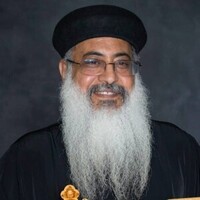
Fr. Mina Mina
Priest
1644 Otts Chapel Road
Newark,
DE
19702
United States
Phone: (302) 368-1626 / (302) 379-2531
Fax: (610) 532-2885
Download Priest Fr. Mina Mina vCard
Click here to contact Fr. Mina Mina
Denomination
Orthodox Church
Orthodox Churches in Newark, DE
Orthodox Churches in Delaware
Orthodox Churches in United States
Orthodox Churcheses near me
All churches in Newark, DE
Affiliations
Church Website
Virgin Mary Coptic Orthodox Church on Social Media
Virgin Mary Coptic Orthodox Church Newark on YouTube
Facebook Video: Virgin Mary Coptic Orthodox Church Facebook Video
Leadership
Leader Name:
Fr. Mina Mina
Leader Position:
Priest
Formal Title:
Leader Address:
Phone:
Fax:
(610) 532-2885
Leader Email:
Click here to contact Fr. Mina Mina
Leader Bio:
Fr. Mina Mina on Social Media:
Other Church Leaders:
Leadership Photos
Administration
Admin Name:
Admin Position:
Admin Address:
Phone:
Fax:
Admin Email:
Mailing Address
Driving Directions
Travel/Direction Tips
Know how to get there? Share the knowledge with others!
Parking
Please share parking information and/or parking experience!
Virgin Mary Coptic Orthodox Church Service Times
Sunday Liturgy live-stream starting at 8:30 AM EDT ·
It's been more than 3 years since the last service times update. Please make sure to contact the church to confirm service times.
Please contact the church to confirm Service Times or SUBSCRIBE to updates below
It's been more than 3 years since the last service times update. Please make sure to contact the church to confirm service times.
Please contact the church to confirm Service Times or SUBSCRIBE to updates below
Worship Languages
Dress Code
Sunday School / Children and Youth Activities
Under 12s:
Under 18s:
Local outreach & community activities
Other activities & ministries
Special Needs/Accessibility
Prayers and Hymns
Main Bible:
Hymns and Songs:
Other information
Average Adult Congregation:
Average Youth Congregation:
Additional Info:
Virgin Mary Coptic Orthodox Church Newark Photos
Virgin Mary Coptic Orthodox Church History
Who are the Copts?
The Coptic Orthodox Church is one of the most ancient Churches in the world, founded in the first century in Egypt by Saint Mark the Apostle and writer of the second Gospel of the New Testament. A conservative Church, it has carefully preserved the Orthodox Christian faith in its earliest form, handing it down through generations, remaining true to the Apostolic doctrines and patterns of worship. The Church’s spiritual approach emphasises holiness, Divine Mysteries and fellowship, rooted firmly in the canons of the Holy Scriptures, the apostolic and Orthodox creeds, the teachings of the Church Fathers and the first three ecumenical councils.
Origins
Egypt is a land rich in history, blessed by our Lord Jesus Christ Himself. In His infancy, the Lord visited Egypt with His mother Saint Mary, and Saint Joseph during their flight from Israel at the instruction of the angel, and thus Egypt became their second home and a place of refuge (Matthew 2:13-14). The word ‘Copt’ is derived from the Pharaonic word ‘gypt’ and the subsequent Greek word ‘Aigyptus’ meaning ‘Egypt’. Copts are the Christian and indigenous people of Egypt, direct descendants of the ancient Egyptians, a people with perhaps the longest recorded history.
When Saint Mark travelled to Egypt on two separate mission trips, he preached the Christian message to many in the land. During his first journey, he met with Ananias, who expressed knowledge of the concept of the ‘one god’, and when this was further explained by Saint Mark within a Christian context, he accepted the faith and was baptised along with his household. Soon afterwards, many others believed and Ananias’ house became a meeting place for the faithful. After witnessing for seven years, Saint Mark was martyred in AD 68 when followers of Serapis (the Serapion-Abbis Greek Egyptian god) attacked the church in which he was praying and dragged him through the streets of Alexandria for two consecutive days.
Sacraments
Like any other Traditional Sacramental Church, the Sacraments are considered to be sacred actions by which believers receive an invisible grace, through material or visible signs and elements. The Coptic Church observes seven Sacraments:
Baptism Chrismation Repentance and Confession The Eucharist Unction of the Sick Matrimony Priesthood/Holy Orders
In Eucharistic liturgy, the faithful gather in union to pray, and to partake of the Eucharist, considered to be the Body and Blood of the Lord Jesus Christ. The liturgy is chanted using the Coptic language, alongside the language of the land in which the Church is based, utilising a musical composition that in part dates back to the Pharaonic era. The three divine liturgies celebrated in the Church today are those of Saint Basil, Saint Gregory, and Saint Cyril, based on that used by Saint Mark in the first Century.
Leadership
Parish communities and churches are served by married priests who are nominated from within that parish for its service. Once nominated, their names would be presented to the bishop who would approve and then ordain them for that ministry. Bishops on the other hand, including the Pope, are celibate and are selected from within monastic communities.
Monasticism was founded by Saint Anthony the Great towards the end of the third century and thrives in the Church up to the present day. Those living the monastic life in any church or denomination anywhere in the world can trace their roots back to the deserts of Egypt. Although monks did not record their own history, many came from all over the world to benefit from their words, seeking spiritual guidance and documenting their teachings. Western monastic fathers, such as Saints Benedict and John Cassian, came to the deserts of Egypt to experience this way of solitary life and subsequently introduce this to the West, where it was then embraced and became the foundation of monasticism in those parts of the world. Those living the monastic life became tangible sermons, faithfully embodying the life of prayer, contemplation, solitude, worship and purity of heart and ascetism.
Fasting
Stemming from these monastic principles is a deeply rooted ascetic life that is expressed in the practice of fasting. Fasting is another principal foundation in the life of the Church, and of the 365 days of the year, Copts fast for over 210. These periods are considered to be times of spiritual growth and reflection based on prayer and Scripture, during which people observe a period of abstinence at the beginning of the day, followed by a vegan diet. The major fasts in the Coptic calendar are Lent, leading to the Feast of the Resurrection, and Advent, leading to the Feast of the Nativity.
Prayer
Prayer is a fundamental foundation in the life of the Church, and the Agpeya is the book containing the seven prayers observed daily. Arranged to commemorate various events in the life of Christ and the Church, they help to guide the faithful in daily reflection, and are labelled as the first, third, sixth, ninth, eleventh, twelfth and midnight hour. The veil is a separate daily prayer only observed by those in monastic life. Other forms of prayer observed are the Raising of Evening and Morning Incense, Midnight Praises, and Morning and Evening Praises. Within the context of non-ritual gatherings and prayer meetings, contemporary forms of prayer and worship are also used.
Seeking the intercession of saints is a valued component in Orthodox practice, although it is sometimes misunderstood as the worship of those saints. The understanding behind intercession is that strength and encouragement can be found in commemorating the life of those who lived faithfully, including the martyrs who died for their faith, and that there is value in asking for their prayers.
‘Church of the Martyrs’
Historians have named the Coptic Church the ‘Church of Martyrs’, because of the great number of people who died for their faith. During the reign of emperor Diocletian almost one million men, women, and children were killed for their faith in Egypt, and thus to commemorate their sacrifice, the Church determined to commence its calendar, known as ‘Anno Martyrii’, or ‘Year Of the Martyrs,’ in the year 248 AD, the commencement of his reign.
Another wave of persecution came when Islam entered Egypt in the 7th Century, bringing a new set of challenges for Christians and the Church. There was now a requirement for the payment of Gezya tax by non-Muslims in exchange for the receipt of ‘protection’. Those who could not pay were faced with the choice of either converting to Islam or losing their civil right for that protection, which generally resulted in many losing their lives. By the beginning of the second millennium AD, in addition to Gezya, Christians suffered from specific limitations, such as restrictions on repairing old churches and building new ones, testifying in court, public conduct, adoption, inheritance, public religious activities, and dress codes. Slowly but steadily, by the end of the 12th century, the face of Egypt changed from being a predominantly Christian to a predominantly Muslim country.
Despite persecution, however, the Coptic Church has never been controlled, or allowed itself to control the governments of Egypt. This position of the Church concerning the separation between state and religion stems from the words of the Lord Himself, “Render therefore to Caesar the things that are Caesar’s, and to God the things that are God’s ” (Matthew 22:21).
Growth
Today, the Coptic Orthodox Church has the largest Christian presence in the Middle East, with approximately 10-15 million members in Egypt, representing about 15 per cent of the population. They vibrantly, actively and faithfully fill their churches and monasteries, living as productive and faithful members of their communities. The Coptic Orthodox Church has also experienced rapid growth in the lands of immigration over the past 30 years, in the United Kingdom, Europe, North America and Australasia. There are now over 15 dioceses and 500 parishes outside Egypt, and the Church continues to flourish by the grace of God. It is worth mentioning at this point that we do not consider our communities living abroad as a diaspora, as 90 per cent of Coptic Christians still live in their native Egypt.
Ministry
This flourishing ministry is the direct result of the Church’s focus on Christian education at every level over the past decades, starting from a vibrant and wide-ranging Sunday School movement, to an active and engaging youth ministry, and continuing in adult education within theological colleges and seminaries, as well as local parish settings.
Besides its focus on Christian education, there is also a deep-seated and historical focus on mission. The mission work of the Church has not been limited to the early centuries, but extends to its active and vibrant ministry today. Our philosophy is not to aggressively seek to convert people to the Faith, but rather to follow the teachings of the Lord Jesus Christ in the Gospel of Saint Matthew, when He instructs us saying “Let your light so shine before men, that they may see your good works and glorify your Father in heaven,” and thus attract others to Him in this way. The principal functions of the Church are to care for her flock and to be “a light to the whole world”, attracting people to Christ. In being alive in the world as the Body of Christ, the Church provides a source of hope for all.
The Coptic Orthodox Church is one of the most ancient Churches in the world, founded in the first century in Egypt by Saint Mark the Apostle and writer of the second Gospel of the New Testament. A conservative Church, it has carefully preserved the Orthodox Christian faith in its earliest form, handing it down through generations, remaining true to the Apostolic doctrines and patterns of worship. The Church’s spiritual approach emphasises holiness, Divine Mysteries and fellowship, rooted firmly in the canons of the Holy Scriptures, the apostolic and Orthodox creeds, the teachings of the Church Fathers and the first three ecumenical councils.
Origins
Egypt is a land rich in history, blessed by our Lord Jesus Christ Himself. In His infancy, the Lord visited Egypt with His mother Saint Mary, and Saint Joseph during their flight from Israel at the instruction of the angel, and thus Egypt became their second home and a place of refuge (Matthew 2:13-14). The word ‘Copt’ is derived from the Pharaonic word ‘gypt’ and the subsequent Greek word ‘Aigyptus’ meaning ‘Egypt’. Copts are the Christian and indigenous people of Egypt, direct descendants of the ancient Egyptians, a people with perhaps the longest recorded history.
Sacraments
Like any other Traditional Sacramental Church, the Sacraments are considered to be sacred actions by which believers receive an invisible grace, through material or visible signs and elements. The Coptic Church observes seven Sacraments:
Baptism Chrismation Repentance and Confession The Eucharist Unction of the Sick Matrimony Priesthood/Holy Orders
In Eucharistic liturgy, the faithful gather in union to pray, and to partake of the Eucharist, considered to be the Body and Blood of the Lord Jesus Christ. The liturgy is chanted using the Coptic language, alongside the language of the land in which the Church is based, utilising a musical composition that in part dates back to the Pharaonic era. The three divine liturgies celebrated in the Church today are those of Saint Basil, Saint Gregory, and Saint Cyril, based on that used by Saint Mark in the first Century.
Parish communities and churches are served by married priests who are nominated from within that parish for its service. Once nominated, their names would be presented to the bishop who would approve and then ordain them for that ministry. Bishops on the other hand, including the Pope, are celibate and are selected from within monastic communities.
Monasticism was founded by Saint Anthony the Great towards the end of the third century and thrives in the Church up to the present day. Those living the monastic life in any church or denomination anywhere in the world can trace their roots back to the deserts of Egypt. Although monks did not record their own history, many came from all over the world to benefit from their words, seeking spiritual guidance and documenting their teachings. Western monastic fathers, such as Saints Benedict and John Cassian, came to the deserts of Egypt to experience this way of solitary life and subsequently introduce this to the West, where it was then embraced and became the foundation of monasticism in those parts of the world. Those living the monastic life became tangible sermons, faithfully embodying the life of prayer, contemplation, solitude, worship and purity of heart and ascetism.
Stemming from these monastic principles is a deeply rooted ascetic life that is expressed in the practice of fasting. Fasting is another principal foundation in the life of the Church, and of the 365 days of the year, Copts fast for over 210. These periods are considered to be times of spiritual growth and reflection based on prayer and Scripture, during which people observe a period of abstinence at the beginning of the day, followed by a vegan diet. The major fasts in the Coptic calendar are Lent, leading to the Feast of the Resurrection, and Advent, leading to the Feast of the Nativity.
Prayer
Prayer is a fundamental foundation in the life of the Church, and the Agpeya is the book containing the seven prayers observed daily. Arranged to commemorate various events in the life of Christ and the Church, they help to guide the faithful in daily reflection, and are labelled as the first, third, sixth, ninth, eleventh, twelfth and midnight hour. The veil is a separate daily prayer only observed by those in monastic life. Other forms of prayer observed are the Raising of Evening and Morning Incense, Midnight Praises, and Morning and Evening Praises. Within the context of non-ritual gatherings and prayer meetings, contemporary forms of prayer and worship are also used.
‘Church of the Martyrs’
Historians have named the Coptic Church the ‘Church of Martyrs’, because of the great number of people who died for their faith. During the reign of emperor Diocletian almost one million men, women, and children were killed for their faith in Egypt, and thus to commemorate their sacrifice, the Church determined to commence its calendar, known as ‘Anno Martyrii’, or ‘Year Of the Martyrs,’ in the year 248 AD, the commencement of his reign.
Another wave of persecution came when Islam entered Egypt in the 7th Century, bringing a new set of challenges for Christians and the Church. There was now a requirement for the payment of Gezya tax by non-Muslims in exchange for the receipt of ‘protection’. Those who could not pay were faced with the choice of either converting to Islam or losing their civil right for that protection, which generally resulted in many losing their lives. By the beginning of the second millennium AD, in addition to Gezya, Christians suffered from specific limitations, such as restrictions on repairing old churches and building new ones, testifying in court, public conduct, adoption, inheritance, public religious activities, and dress codes. Slowly but steadily, by the end of the 12th century, the face of Egypt changed from being a predominantly Christian to a predominantly Muslim country.
Growth
Today, the Coptic Orthodox Church has the largest Christian presence in the Middle East, with approximately 10-15 million members in Egypt, representing about 15 per cent of the population. They vibrantly, actively and faithfully fill their churches and monasteries, living as productive and faithful members of their communities. The Coptic Orthodox Church has also experienced rapid growth in the lands of immigration over the past 30 years, in the United Kingdom, Europe, North America and Australasia. There are now over 15 dioceses and 500 parishes outside Egypt, and the Church continues to flourish by the grace of God. It is worth mentioning at this point that we do not consider our communities living abroad as a diaspora, as 90 per cent of Coptic Christians still live in their native Egypt.
This flourishing ministry is the direct result of the Church’s focus on Christian education at every level over the past decades, starting from a vibrant and wide-ranging Sunday School movement, to an active and engaging youth ministry, and continuing in adult education within theological colleges and seminaries, as well as local parish settings.
Besides its focus on Christian education, there is also a deep-seated and historical focus on mission. The mission work of the Church has not been limited to the early centuries, but extends to its active and vibrant ministry today. Our philosophy is not to aggressively seek to convert people to the Faith, but rather to follow the teachings of the Lord Jesus Christ in the Gospel of Saint Matthew, when He instructs us saying “Let your light so shine before men, that they may see your good works and glorify your Father in heaven,” and thus attract others to Him in this way. The principal functions of the Church are to care for her flock and to be “a light to the whole world”, attracting people to Christ. In being alive in the world as the Body of Christ, the Church provides a source of hope for all.
Virgin Mary Coptic Orthodox Church Historical Photos
Add a historical photo
 When we stumble...
When we stumble...
O Lord our God, Who has called us to serve You in the midst of the world's affairs, When we stumble, hold us; when we fall, lift us up. When we are hard pressed with evil, deliver us. When we turn from what is good, turn us back and bring us at last to Your glory.
Virgin Mary Coptic Orthodox Church listing was last updated on the 24th of June, 2021
THANK YOU FOR VISITING VIRGIN MARY COPTIC ORTHODOX CHURCH ONLINE!
Virgin Mary Coptic Orthodox Church Accelerated Mobile Page (AMP)

